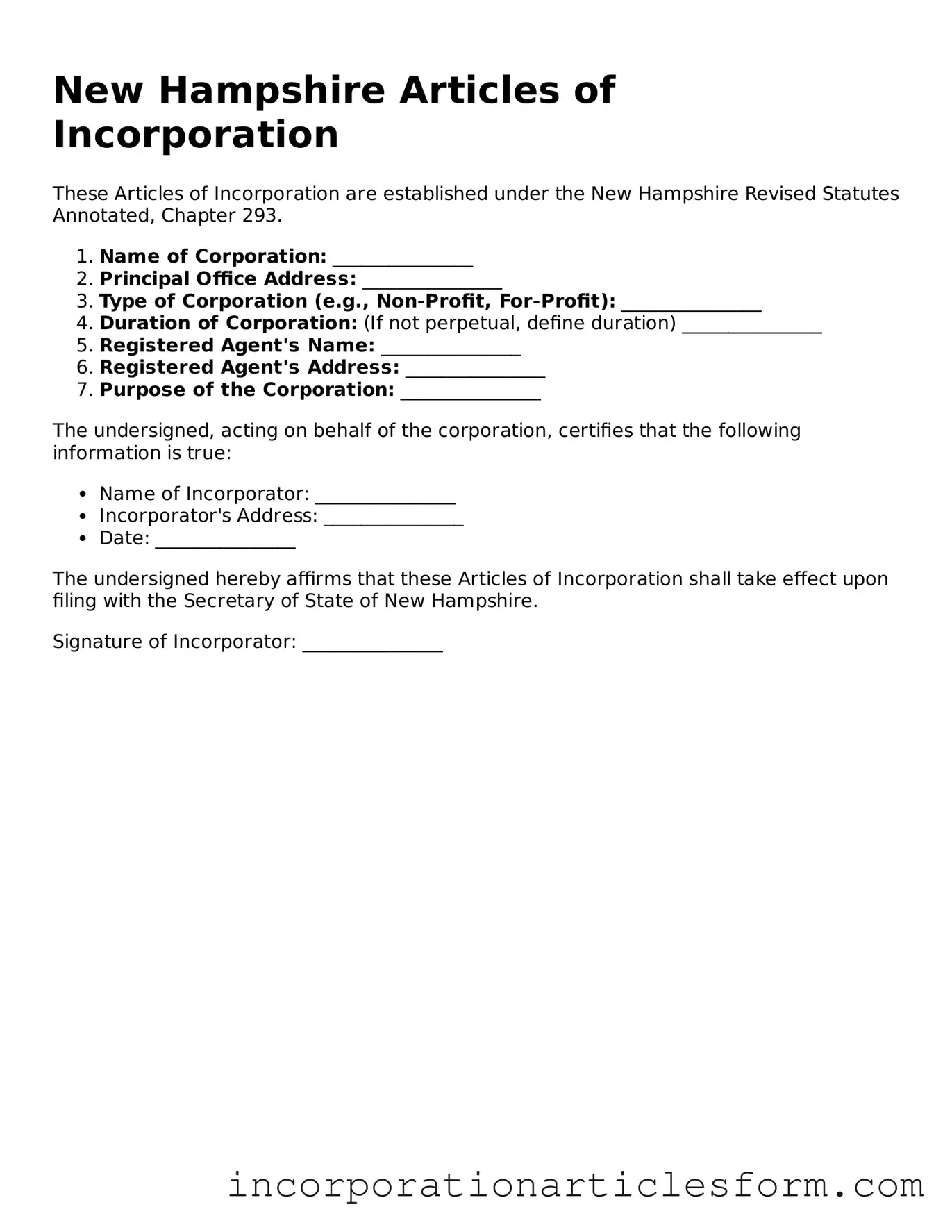The New Hampshire Articles of Incorporation form is similar to the Certificate of Incorporation used in Delaware. Both documents serve as foundational legal documents that establish a corporation's existence. They outline essential information, such as the corporation's name, purpose, and registered agent. In Delaware, the Certificate of Incorporation is often preferred for its flexible corporate laws, attracting many businesses. However, like the New Hampshire form, it requires specific details to be filed with the state to legally create the entity.
Another comparable document is the Articles of Organization in New Hampshire, which is used for forming a limited liability company (LLC). While the Articles of Incorporation focuses on corporations, the Articles of Organization serves a similar purpose for LLCs. Both documents require basic information about the business structure, including the name and address of the entity and its registered agent. This similarity highlights the different legal frameworks available for business formation in New Hampshire.
The Corporate Bylaws document is also similar in that it governs the internal management of a corporation. While the Articles of Incorporation establish the corporation's existence, the Bylaws provide detailed rules on how the corporation will operate. This includes information on the roles of officers, procedures for meetings, and voting rights. Both documents are essential for corporate governance, but they serve different purposes in outlining a corporation's structure and operations.
The Statement of Information, used in several states, bears resemblance to the Articles of Incorporation as it provides updated information about a corporation after its formation. This document typically includes the corporation's address, names of officers, and other relevant details. Like the Articles of Incorporation, the Statement of Information must be filed with the state to keep the corporation in good standing. It ensures that the state has accurate and current information about the business.
In addition, the Business License Application can be compared to the Articles of Incorporation. Both documents are necessary for a business to operate legally within a state. While the Articles of Incorporation create the corporation, the Business License Application allows it to conduct business activities. This application often requires information about the business structure, ownership, and location, similar to the information required in the Articles of Incorporation.
The Partnership Agreement is another document that shares similarities with the Articles of Incorporation. While the latter is specific to corporations, the Partnership Agreement outlines the terms and conditions of a partnership. Both documents define the structure and roles within the business entity. They establish the framework for how the business will operate, including the responsibilities of each party involved, although they cater to different types of business entities.
Lastly, the Nonprofit Articles of Incorporation is akin to the standard Articles of Incorporation but tailored for nonprofit organizations. This document outlines the purpose of the nonprofit, its governance structure, and compliance with state laws. While both documents share a focus on establishing a legal entity, the Nonprofit Articles emphasize the organization's mission and its commitment to serving the public rather than generating profit, differentiating it from traditional corporate Articles of Incorporation.
